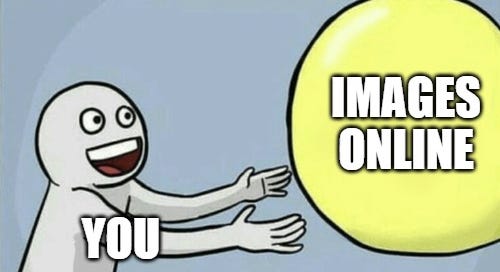The meme I created above is based on the template of the “run-away balloon” meme. It shows a man trying to catch up to his balloon that is floating away, however the situation flips on him as he is then caught by a “balloon-man.” This meme shows the run-away balloon as “images online”, the man as the reader, and the balloon-man as “CCL’s” which stands for creative commons license. This meme represents how people of the public may use or try to use images online without the knowledge of the CCL it has. It shows how a CCL can sneak up on a creator and end up causing harm to them even if they are unaware of the license.
In chapter ten of the book, Writing and Editing for Digital Media, the author discusses the legal side of creating digital media. He talks about how influencers and content creators on various platforms are protected by certain laws. These laws allow creators and bloggers to republish and edit forms of media they find online. To be more specific, section 230 of the CDA is the law that protects these creators. The law was originally created to “protect free expression by shielding Internet companies
from liability for much of the content their users post on their platforms and affording
companies legal immunity for good faith efforts to remove potentially actionable con-
tent (Taylor 309).” Without these laws a multitude of creators and companies could face copyright allegations.
Taylor also claims that copyright in the US has started overstepping its boundaries and possibly preventing our freedom of speech. This is evident through the fact that media published back in the 1800’s would get taken down off of any digital platform if it were to get published today. The author uses the example of Shakespeare using another authors story to outline his own. He claims that this would immediately get taken down today and that even playing the wrong music in a video can get it taken down.





Copyright issues are a huge problem these days. And to be said, I often face problems with copyrights when making a PowerPoint for a presentation, such as not sure if the image is available to use or not. This meme makes great representation of these kind of problems. "Clear to the point", I could say. I also think the part where you mention parts from outside source, that copyright is "overstepping its boundaries" is a great point. Copyright is always a one-side benefit, it cannot protect the original creator and the recreators at the same time. But I believe we could find a proper way to protect copyright that not only protects the original creator, but also encourages recreation of existing contents.
This is a great explanation of creative commons and how other companies can do harm to content creators without them knowing. What came to my mind with creative commons was the Canadian writing company Wattpad. There's a ton of fanfictions on there that follow the same plots as a lot of famous stories. I looked up copyright laws in Canada and it said "copyright exists during your lifetime and 70 years after your death" and plenty of these fanfictions don't follow those laws. However, when I looked at the Wattpad help center it said "you retain all rights to your story", despite these laws and the fact the website has a thing with all the different domains you can place your story underneath, even if the characters aren't your own. If Wattpad had been American, I bet more than half of these stories would've been taken down due to copyright infringement. (Funfact: Pride and Prejudice is on Wattpad and it's now been in the public domain since 2009. It's also a free read too.).